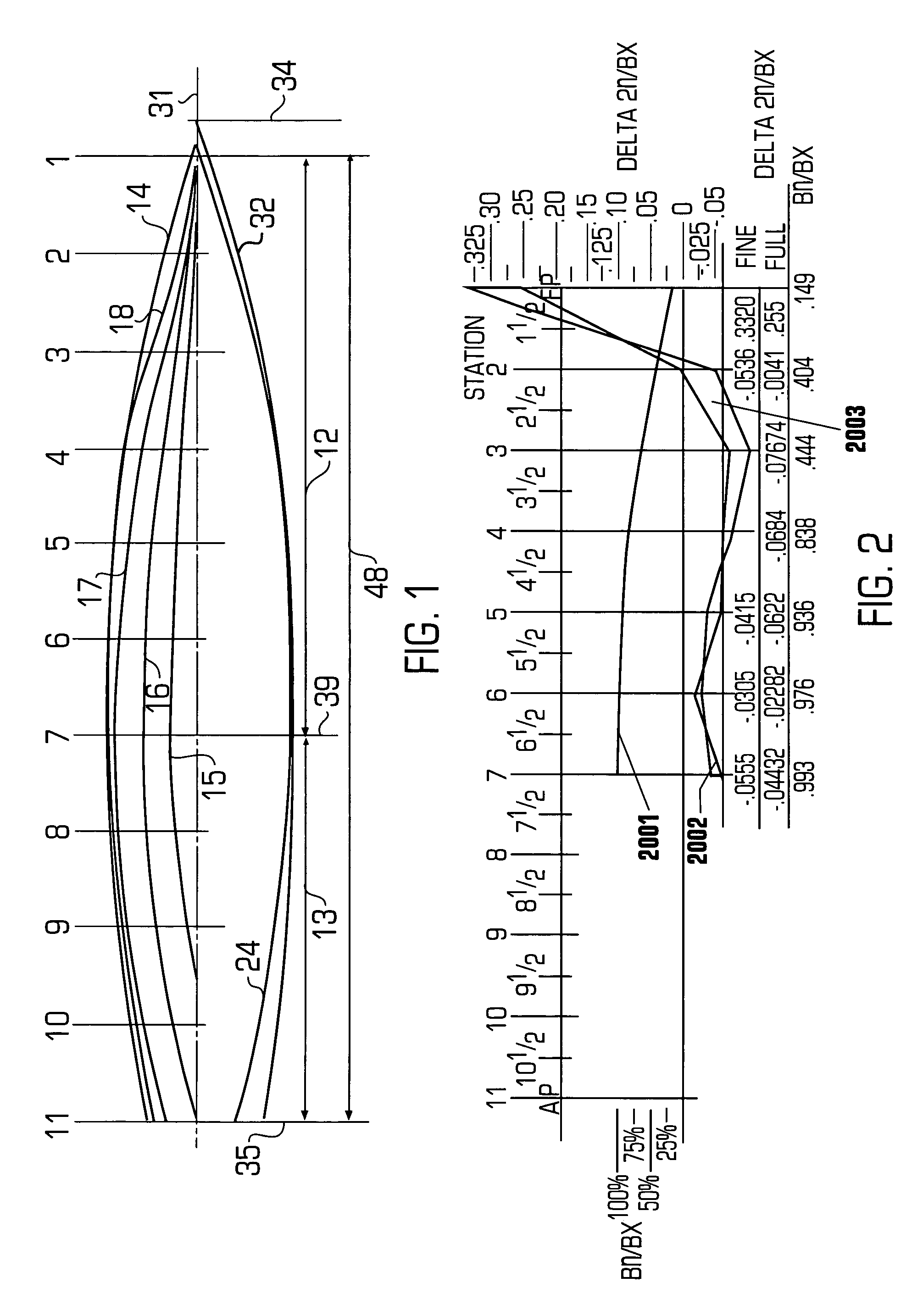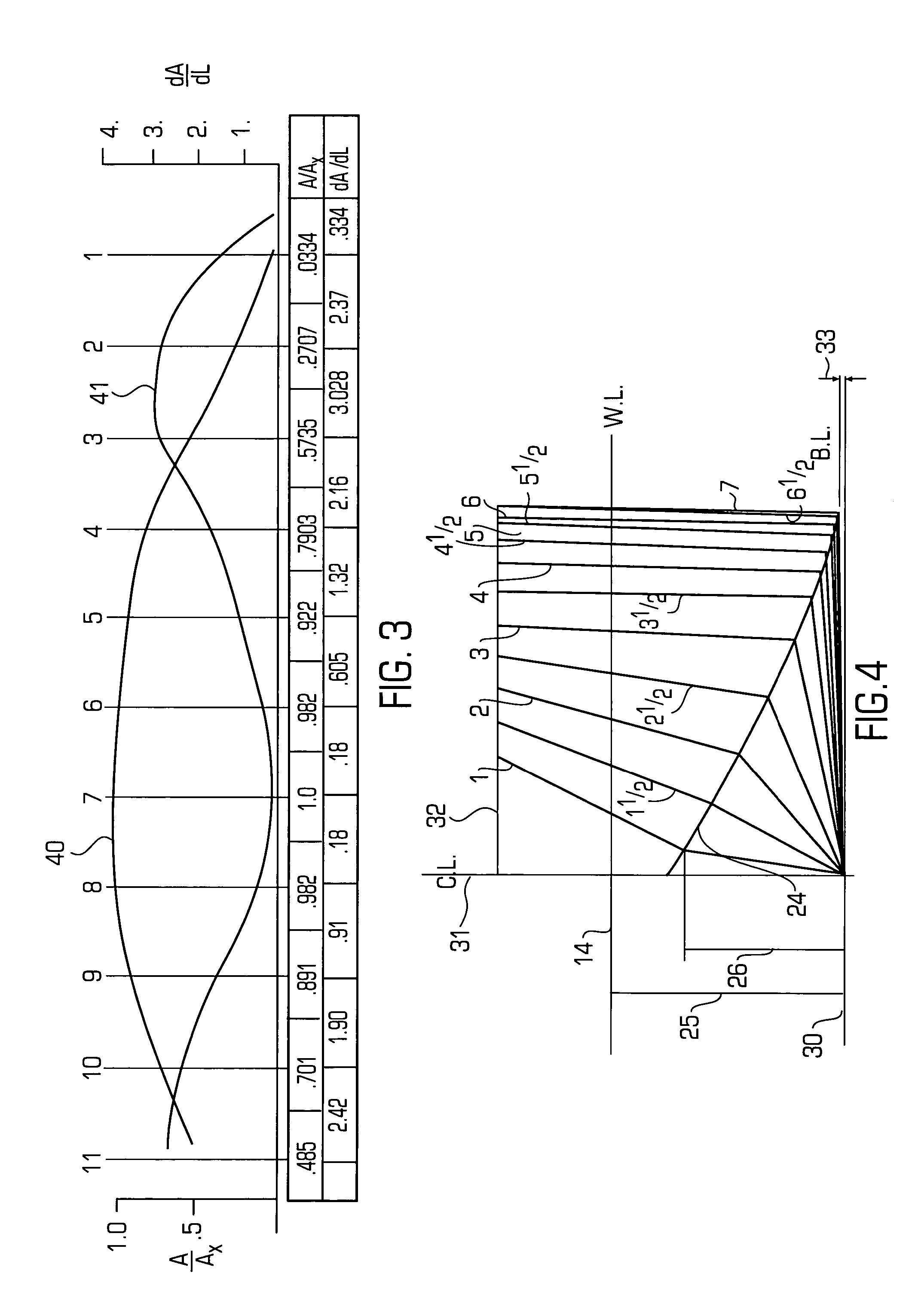Hull having minimized wave-making characteristics
a wave-making characteristic and hull technology, applied in the field of vessels, to achieve the effect of reducing wave drag, improving performance, and minimizing bow wave-making
- Summary
- Abstract
- Description
- Claims
- Application Information
AI Technical Summary
Benefits of technology
Problems solved by technology
Method used
Image
Examples
Embodiment Construction
[0052]The present discussion applies the principles disclosed in the '595 application, which is fully and completely incorporated herein by reference, to a full displacement hull. While the following discussion relates to a full displacement type hull, such as a tanker hull, it should be appreciated that the invention is applicable to both full displacement hulls and semi-displacement hulls, and that the teachings of the invention may be applied to design hulls that are being manufactured or to modify existing hulls. Furthermore, although the invention provides design concepts for both the forebody (e.g., bow portion) and afterbody (e.g., stern portion) of a hull, the advantages provided by the bow and stern offset designs are not dependent upon each other to create separation and closing effects. Thus, the present invention may be used to design or modify an improved hull that implements either the bow or stern offset design taught herein, or that implements both the bow and stern ...
PUM
 Login to View More
Login to View More Abstract
Description
Claims
Application Information
 Login to View More
Login to View More - R&D
- Intellectual Property
- Life Sciences
- Materials
- Tech Scout
- Unparalleled Data Quality
- Higher Quality Content
- 60% Fewer Hallucinations
Browse by: Latest US Patents, China's latest patents, Technical Efficacy Thesaurus, Application Domain, Technology Topic, Popular Technical Reports.
© 2025 PatSnap. All rights reserved.Legal|Privacy policy|Modern Slavery Act Transparency Statement|Sitemap|About US| Contact US: help@patsnap.com



